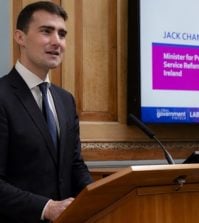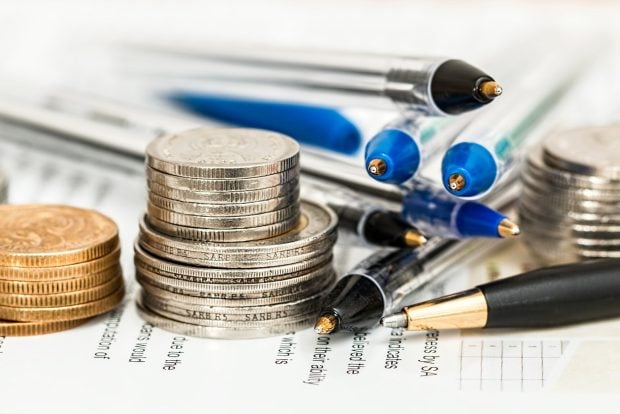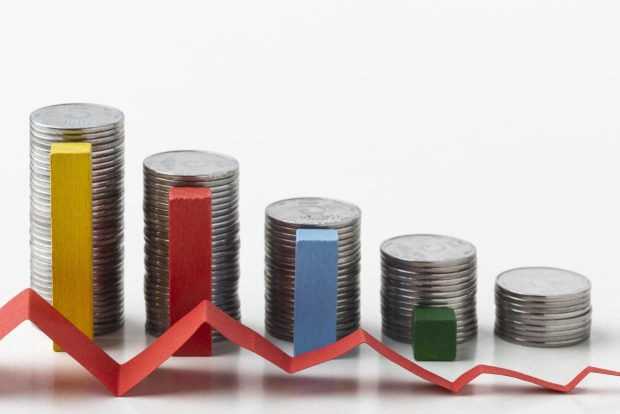Rebuilding public finances: exploring the post-pandemic recovery

As governments invest in keeping their economies ticking over, civil servants are thinking about how to close yawning budget deficits. At a recent webinar, finance leaders considered how best to invest stimulus packages to promote future growth – and avoid past mistakes. Adam Branson reports
Governments around the world have collectively already committed US$10 trillion to supporting their economies during the COVID-19 pandemic, according to research by Deloitte. That eye-watering figure is three times higher than the support put in place during the 2008-09 global financial crisis – and is likely to increase substantially.
While the focus remains on fighting the virus as the northern hemisphere tips into winter, governments are thinking about the recovery that will arrive one day and how they can rebuild their finances. This was the subject of a Global Government Forum webinar, held earlier this month and chaired by former UK senior civil servant Siobhan Benita. Experts shared insights including how governments are looking at green economic packages, equality and tax.
Digging deep

Markus Sovala, director general and economic policy coordinator at the Ministry of Finance in Finland, was blunt about his government’s approach to public spending during the pandemic. “We decided that we wouldn’t worry how much the measures to curb the epidemic will cost, and the result is they are almost astronomical,” he said. “The planned deficit for the central government in the budget was €2 billion (US$2.4bn) and now we are somewhere around €18 billion (US$21bn).”
Veiko Tali, secretary general at Estonia’s Ministry of Finance, agreed that many governments are having to dig deep. The support measures cost around €2bn (US$2.4bn), compared with a GDP of €30bn (US$36bn), he said. “Mainly, we had a wage support scheme,” explained Tali. “This measure was very quick. It was decided at the end of March and paid [out] in April. Our experience was this was very effective. It cost around €300m (US$360m) but more than 100,000 employees got this additional support for wages.”
With many countries now dealing with the second wave of COVID-19, now is not the time to withdraw support. “Even though governments are feeling the strain of that financial support, the reality is they really can’t stop because this is going to be with us for another while,” said Michael Flynn, global government and public services leader at Deloitte. “That decision [to spend whatever is needed] by Finland has been taken by a lot of governments around the world, because it needs to happen.”
Trouble ahead
But as governments are turning on the spending, public finances are taking a hit from shrinking economies and tax revenues. There will be some lagging economic disruption, warned Sovala. “In Finland, second quarter GDP year to year was minus 5%,” he said. “But in some important economies in Europe and outside, the loss has been something like 20%. Of course, that will affect Finnish exports.” Meanwhile, ongoing restrictions are continuing to depress GDP in many countries.

While support was initially provided across all industries by most governments during their various forms of lockdown, Flynn said that the majority are now being more selective. “While initially there was this massive support across everything, now you’re seeing [governments] identify where there’s the greatest impact,” he said.
In addition to spending more selectively, Flynn also warned that governments need to do more to ensure that support packages aren’t abused. Deloitte estimates that 8-10% of the funding given out in large government support programmes goes missing through fraud and other abuse. “So avoiding waste, particularly with volumes of money like this, is really significant,” he said. “Careful management and monitoring of distribution is really important.”
Green stimulus packages
Numerous infrastructure spending programmes around the world – many of which have been brought forward – are being used to stimulate economies. “We know that you need strong infrastructure to support a strong economy,” said Flynn. “The issue is we need to get it there quickly. Australia has fast-tracked its infrastructure plan, which is focused on roads maintenance, getting people working and getting the economy moving again.”
In contrast to the 2008-09 financial crisis, panellists said that most governments view green investments as a key part of any stimulus package. “Even at the height of COVID-19 we did surveys and what we saw was that sustainability and climate still stayed up there as being major, major issues,” said Flynn.
“What we are seeing is that a lot of governments are putting in green infrastructure plans and putting in the funding to develop green technologies. South Korea is putting solar panels on all of their public buildings. It is a positive change, but it creates immediate impact from an economist’s point of view,” he added.

Certainly, this strategy is being pursued in Finland. Sovala reasoned that if governments need to produce stimulus packages, they might as well do so in a manner that supports other existing policies such as international climate change commitments. “If you’re spending money on renewing your economy, it’s wise to do it in a way that also supports your other targets,” he said. “And in the Finnish case, the basic rules of the investment support package is that 37% of the expenditure should be used for different kinds of green investments.”
Ultimately, Flynn added, such investments should pay for themselves. “Lots of investors are very keen on sustainable investment – it’s performing better than other investments,” he said. “With government money, in many cases, you’re investing into these projects and therefore generating a return. There are projects that can create capital in the future, albeit may need public money today.”
A focus on equality
The experience of dealing with the 2008-09 financial crisis is also affecting government thinking on income and wealth equality. A decade ago, policies were all about getting the economy moving again as quickly as possible, with little heed being paid to who would benefit. With the COVID-19 pandemic, however, the panel felt that more attention is being given to ensuring policies help tackle inequality.
“We will still end up with two layers, because you have those that can jump on calls like this and do our job online and those who can’t,” said Flynn. “And if you go back to when we were all in lockdown, the essential workers were, in many cases, our lowest-paid workers – in grocery stores and even some health workers. Now, as you grow out of this, we have to find some way of acknowledging those who stepped up and were our essential workers at the time. We can’t forget what lower-paid workers did, and they can’t be impacted unfairly again.”

The hope is that tax hikes for the lowest paid can be avoided, but there was recognition that new forms of revenue will have to be found. Tali raised the prospect of imposing higher taxes on high-polluting companies. “If you’re looking to the medium and longer term, I think one of the crucial questions is where your tax base is and how you can catch it,” he said. “One of which is tangible is green taxation.”
More could be done to properly tax digital businesses too, according to Tali. He acknowledged that this would require international cooperation, but argued that it’s quite possible from a technical perspective. “If you’re doing something digital, it’s recorded in some way. And if it’s [recorded], it’s also possible to tax. But the question, of course, is how to define the residence of the tax base. This is a big question to agree between countries and regions. I think, in principle, it’s a simple and effective way to tax. It’s a question of whether we are able to agree about the rules and regulations.”
Keeping an eye on rates
Finally, governments must bear in mind that interest rates may still be at historic lows, but they can’t rely on that remaining the case in the medium- to long-term. “It’s very difficult to explain to politicians that this is going to end someday,” said Sovala. “This artificially low interest rate level cannot prevail permanently.”
Flynn added: “Interest rates have been low, particularly in Europe, for so long that it is a challenge to convince everybody that they’re going to grow. But things can change quite dramatically. So you’ve always got to consider that this could happen. It’s not necessarily something that’s going to happen tomorrow. But that’s the way the global economy will move over time.”
For now, governments are necessarily focused on fighting back against a second wave of COVID-19 and getting the pandemic under control again. However, it is already clear that senior civil servants and the companies that support them are thinking very hard about how governments can dig themselves out of the financial hole in which the pandemic has cast them.
‘Restoring the public finances’ was held on 6 October 2020. You can download the presentation slides here and watch the whole event via YouTube:





















